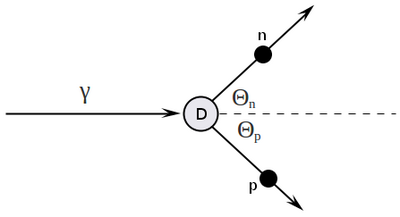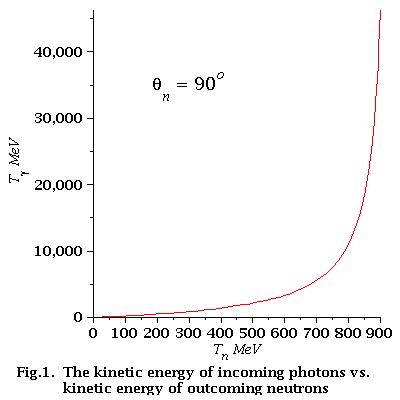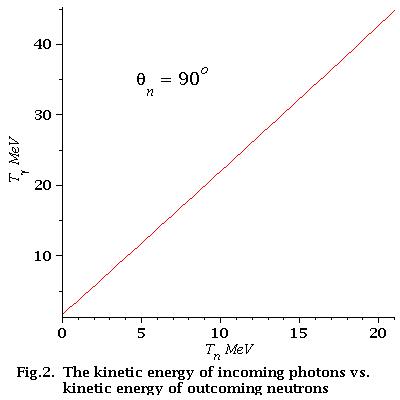Difference between revisions of "Neutron Polarimeter"
Jump to navigation
Jump to search
(→plots) |
(→plots) |
||
| Line 39: | Line 39: | ||
<math> T_n = \frac {2\ T_{\gamma}\ m_D + m_D^2 + m_n^2 - m_p^2} {2\left( T_{\gamma} + m_D \right)} - m_n</math> | <math> T_n = \frac {2\ T_{\gamma}\ m_D + m_D^2 + m_n^2 - m_p^2} {2\left( T_{\gamma} + m_D \right)} - m_n</math> | ||
| − | == | + | ==how it looks== |
| − | [[File: | + | [[File:Kinetic_energy_0_900_MeV.jpeg]] [[File:Kinetic_energy_0_21_MeV.jpeg]] |
==low energy approximation== | ==low energy approximation== | ||
Revision as of 04:18, 7 June 2010
Analysis of energy dependence
four-vectors algebra
writing four-vectors:
Doing four-vector algebra:
Detector is located at , so
and visa versa
how it looks
low energy approximation
As we can see from Fig.2 for low energy neutrons (0-21 MeV)
energy dependence of incident photons is linear
Find that dependence. We have:
So, the equation of the line is:
Finally for low energy neutrons (0-21 MeV):
example of error analysis
If we have, say, 10 MeV neutron with uncertainly 1 MeV,
the corresponding uncertainly for photons is:


